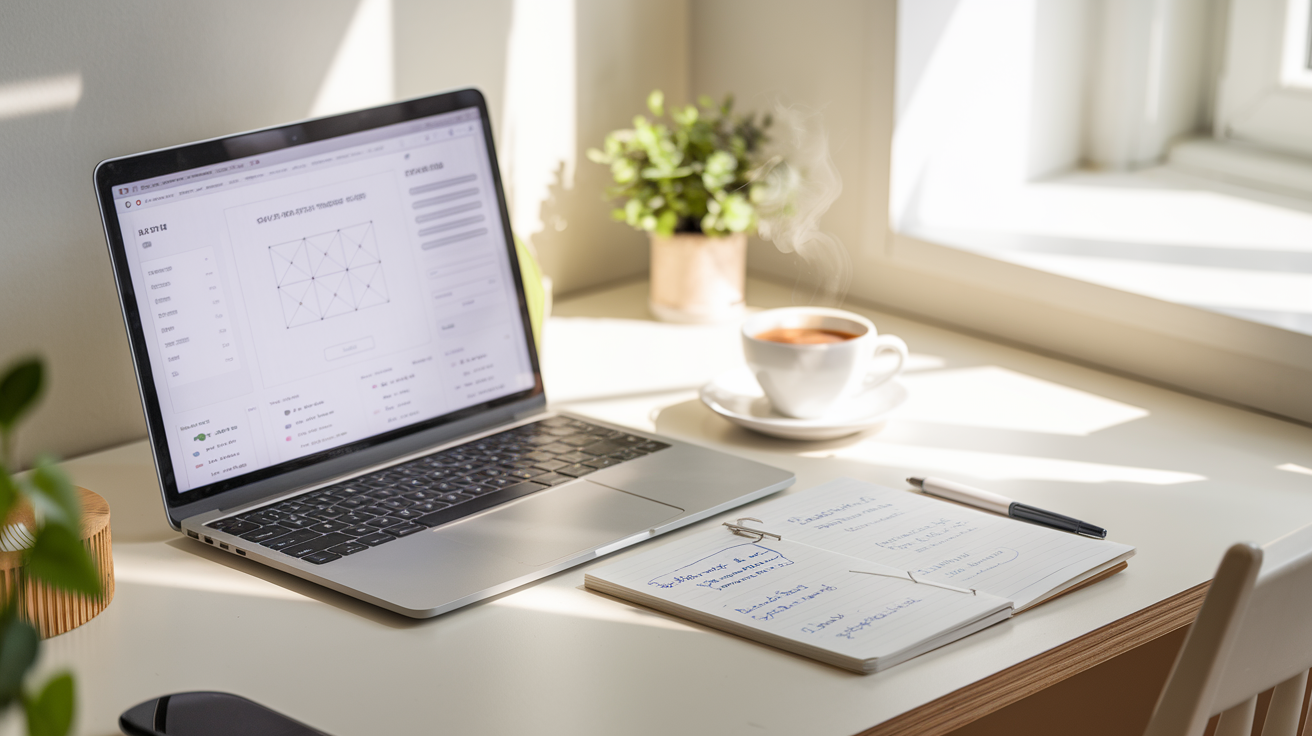How to Start a Print-on-Demand Business in 2025
Here’s a reality check: 73% of people dream of being their own boss, but only 16% actually take the leap into entrepreneurship. What’s holding most back? The fear of inventory, upfront costs, and complex logistics.
What if I told you there’s a business model that eliminates all three of those barriers?
Enter the print-on-demand business – a model that’s generated over $4.9 billion in revenue in 2024 alone and shows no signs of slowing down. Unlike traditional retail, you don’t need a warehouse, minimum orders, or even upfront inventory costs.
You simply create designs, upload them to platforms, and earn money every time someone buys your product. The platform handles printing, shipping, and customer service while you focus on what matters most: building your brand and creating designs people love.
In this comprehensive guide, you’ll discover exactly how to launch your own profitable print-on-demand business in 2025. From choosing the right platform to scaling your first $1,000 month, we’ll cover every step of the journey with real examples, proven strategies, and actionable tips you can implement today.
Table of Contents 📋
- What is Print-on-Demand and Why It’s Perfect for 2025
- Choosing Your Profitable Niche (The Make-or-Break Decision)
- Best Print-on-Demand Platforms: 2025 Comparison
- Creating Designs That Sell (No Artistic Skills Required)
- Setting Up Your Store for Maximum Conversions
- Marketing Strategies That Actually Work in 2025
- Pricing for Profit: The Psychology Behind Winning Numbers
- Scaling from Side Hustle to Full-Time Income
What is Print-on-Demand and Why It’s Perfect for 2025 🚀 {#what-is-print-on-demand}
Print-on-demand (POD) is a business model where you create designs and upload them to platforms that handle everything else. When a customer orders your product, it’s printed and shipped directly to them – you never touch inventory.
Here’s why 2025 is the perfect time to start:
The Numbers Don’t Lie
- The global print-on-demand market is expected to reach $39.9 billion by 2031
- E-commerce growth continues accelerating, with online shopping becoming the norm
- Remote work culture has created massive demand for personalized home office items
- Sustainable shopping trends favor on-demand production over mass manufacturing
Why POD Beats Traditional Business Models
Low Startup Costs: Start with as little as $0-$50 (just design software)
Zero Inventory Risk: No products sitting in your garage gathering dust
Global Reach: Sell to customers worldwide without international shipping headaches
Passive Income Potential: Designs can generate sales for months or years
Flexibility: Work from anywhere with just a laptop and internet connection
Pro tip: The most successful POD entrepreneurs treat this as a real business from day one, not just a “passive income” side hustle.
What You Can Sell
The beauty of print-on-demand is the variety of products available:
- Apparel: T-shirts, hoodies, tank tops, leggings
- Home Decor: Canvas prints, pillows, blankets, mugs
- Accessories: Phone cases, tote bags, stickers, notebooks
- Seasonal Items: Holiday decorations, summer gear, back-to-school supplies
The key is finding products that align with your niche and audience preferences.
Choosing Your Profitable Niche (The Make-or-Break Decision) 🎯 {#choosing-your-niche}
This is where 80% of beginners get it wrong. They either go too broad (“funny t-shirts for everyone”) or too narrow (“left-handed cat owners who like jazz”).
The Goldilocks Principle for Niche Selection
Your niche needs to be just right – specific enough to create targeted designs that resonate, but broad enough to sustain a business.
Winning Niche Characteristics:
- Passionate Community: People who actively spend money on their interests
- Recurring Events: Birthdays, holidays, seasons that create repeat demand
- Identity-Based: Groups people are proud to be part of
- Problem-Solving: Addresses specific pain points or needs
5 High-Converting Niches for 2025
1. Pet Parents 🐕
- Market size: $261 billion globally
- Products: Custom pet portraits, “dog mom” apparel, pet memorial items
- Why it works: Emotional connection drives premium pricing
2. Fitness & Wellness 💪
- Market size: $96 billion and growing
- Products: Motivational workout gear, yoga accessories, nutrition tracking journals
- Why it works: Identity-driven purchases, regular gear replacement
3. Remote Work & Digital Nomads 💻
- Market size: 50+ million remote workers
- Products: Home office decor, productivity planners, travel accessories
- Why it works: New lifestyle creating new product needs
4. Plant Parents & Gardening 🌱
- Market size: $47 billion in the US alone
- Products: Plant care guides, garden markers, succulent-themed apparel
- Why it works: Instagram-worthy aesthetic drives social sharing
5. Mindfulness & Mental Health 🧘
- Market size: $4.2 billion meditation market
- Products: Affirmation journals, meditation accessories, self-care reminder items
- Why it works: Growing awareness creates consistent demand
Niche Validation Process
Before committing to a niche, validate demand:
Step 1: Search your niche on Instagram and TikTok
- Look for 100k+ followers on relevant hashtags
- Check engagement rates on posts
- Note what products influencers are promoting
Step 2: Amazon Research
- Search for products in your niche
- Look for items with 1,000+ reviews and 4+ star ratings
- Check if similar POD products exist and their pricing
Step 3: Facebook Groups
- Join 3-5 active groups in your niche
- Observe what questions people ask
- Note what products they recommend to each other
Pro tip: The best niches often combine two interests. “Yoga + Dogs” or “Coffee + Programming” can create unique positioning.
Best Print-on-Demand Platforms: 2025 Comparison 🏆 {#best-platforms}
Choosing the right platform can make or break your POD business. Here’s an honest breakdown of the top options:
Printful + Shopify: The Pro Choice ⭐⭐⭐⭐⭐
Best for: Serious entrepreneurs wanting full control
Profit margins: 15-40% depending on products Product quality: Excellent (premium blanks available) Shipping times: 3-7 business days Monthly cost: $29+ for Shopify
Pros:
- Complete brand control
- Premium product options
- Advanced analytics
- Customer data ownership
- No marketplace fees
Cons:
- Higher startup costs
- Need to drive your own traffic
- More complex setup
Etsy: The Beginner’s Paradise ⭐⭐⭐⭐
Best for: Testing designs and quick validation
Profit margins: 10-30% after fees Built-in traffic: Massive (90+ million active buyers) Fees: 6.5% transaction fee + payment processing
Pros:
- Instant access to millions of buyers
- No monthly fees
- Easy setup process
- Great for handmade/vintage positioning
Cons:
- High competition
- Platform dependency
- Limited customization options
Amazon Merch on Demand: The Volume Play ⭐⭐⭐⭐
Best for: Scaling to high-volume sales
Profit margins: 10-25% Application process: Invitation-only (but accepting more applications in 2025) Products: Primarily apparel
Pros:
- Massive customer base
- Amazon Prime shipping
- No upfront costs
- Hands-off fulfillment
Cons:
- Strict content guidelines
- Account suspension risks
- Limited product variety
- Intense competition
Redbubble: The Passive Income Platform ⭐⭐⭐
Best for: Supplemental income with minimal effort
Profit margins: 5-20% Artist commission: 10-20% of base price Products: 70+ product types
Pros:
- Zero marketing required
- Huge product catalog
- Global marketplace
- Easy upload process
Cons:
- Very low profit margins
- No customer data
- Algorithm dependency
- Frequent account issues
Recommendation for Beginners:
Start with Etsy to validate your designs and niche. Once you’re consistently making $500+/month, graduate to Printful + Shopify for better margins and brand control.
Pro tip: Don’t spread yourself too thin. Master one platform before expanding to others.
Creating Designs That Sell (No Artistic Skills Required) 🎨 {#creating-designs}
The biggest myth in POD? “You need to be an artist to succeed.”
Truth: The highest-earning POD sellers often use simple text-based designs, not complex artwork.
The 3 Types of Winning Designs
1. Text-Based Designs (70% of top sellers)
- Quotes, sayings, and phrases
- Typography-focused layouts
- Minimal graphics or icons
2. Simple Graphics (25% of top sellers)
- Basic illustrations
- Icon combinations
- Pattern designs
3. Complex Artwork (5% of top sellers)
- Detailed illustrations
- Photorealistic designs
- Advanced digital art
Design Tools for Non-Artists
Canva Pro ($12.99/month)
- 75+ million design elements
- POD-specific templates
- Background remover
- Brand kit for consistency
Placeit ($14.95/month)
- Mockup generator
- Logo maker
- Design templates
- Video templates
Creative Fabrica ($9/month)
- Unlimited downloads
- Fonts, graphics, templates
- Commercial license included
- POD-friendly content
The SELLS Framework for Design Success
S – Simple: Easy to read and understand at a glance E – Emotional: Triggers feelings or memories L – Lifestyle: Connects to your audience’s identity L – Legible: Clear text, proper contrast S – Searchable: Includes relevant keywords in your listing
High-Converting Design Categories
1. Motivational Quotes
- “She Believed She Could So She Did”
- “Good Vibes Only”
- Industry-specific motivation
2. Funny Sayings
- “I’m Not Arguing, I’m Just Explaining Why I’m Right”
- Sarcastic humor
- Relatable life situations
3. Identity-Based
- “Dog Mom”
- “Plant Parent”
- Professional titles
4. Seasonal/Holiday
- Christmas designs
- Back-to-school themes
- Summer vacation vibes
Design Research Process
Step 1: Search bestsellers on your chosen platform
- Note trending colors and fonts
- Identify recurring themes
- Check customer reviews for insights
Step 2: Use Pinterest for inspiration
- Search your niche + “quotes”
- Save designs to a private board
- Look for gaps in the market
Step 3: Analyze competitor pricing
- Higher-priced items often indicate quality designs
- Note which designs have the most variants
- Check seller feedback for design preferences
Pro tip: The best designs solve a problem or express an emotion. Ask yourself: “What would make someone in my niche feel understood or inspired?”
Avoiding Copyright Issues
- Never copy existing designs – even if you change colors
- Avoid trademarked phrases (Google “[phrase] trademark” to check)
- Don’t use celebrity names or likenesses
- Avoid copyrighted characters (Disney, Marvel, etc.)
- Create original quotes or use public domain content
Setting Up Your Store for Maximum Conversions 🛍️ {#setting-up-store}
A well-optimized store can double your conversion rates. Here’s how to set up a POD store that actually sells:
Product Listings That Convert
Title Optimization:
- Include primary keyword
- Mention the main benefit
- Keep under 60 characters for mobile
Example: “Dog Mom Shirt – Funny Pet Owner Gift – Soft Cotton Tee”
Compelling Descriptions:
- Start with the main benefit
- Include emotional triggers
- Use bullet points for features
- Add sizing information
- Include care instructions
Template:
Calling all dog moms! 🐕
This soft, comfortable tee is perfect for showing off your love for your furry best friend. Whether you're at the dog park or grocery shopping, let everyone know where your heart belongs.
✓ Super soft cotton blend
✓ Pre-shrunk for perfect fit
✓ Machine washable
✓ Available in 8 colors
✓ Perfect gift for any dog lover
Sizing runs true to size. See size chart for details.
Photography That Sells
Mockup Requirements:
- Lifestyle shots: Show products being used
- Flat lay images: Clean, professional product shots
- Multiple angles: Front, back, close-ups of design
- Color variations: Show all available options
Free Mockup Resources:
- Printful Design Maker (free with account)
- Placeit (subscription)
- Smartmockups (freemium)
Pricing Psychology
Charm Pricing: End prices in 9 or 5 ($19.99, $24.95) Bundle Deals: “Buy 2, Get 1 Free” increases average order value Seasonal Pricing: Premium pricing during relevant seasons Value Anchoring: Show “Compare at” prices for context
SEO Optimization for POD
Keywords to Include:
- Primary product keyword
- Niche-specific terms
- Occasion keywords (gift, birthday, Christmas)
- Material descriptions (cotton, soft, comfortable)
Tag Strategy:
- Use all available tags (Etsy allows 13)
- Mix broad and specific keywords
- Include long-tail phrases
- Update tags based on seasonal trends
Pro tip: Your first image is crucial – it determines whether someone clicks on your listing. Make it eye-catching and clear what you’re selling.
Marketing Strategies That Actually Work in 2025 📈 {#marketing-strategies}
Forget expensive ads and complicated funnels. These organic strategies can drive consistent traffic to your POD store:
Pinterest: The POD Goldmine
Why Pinterest works for POD:
- 465 million monthly users actively searching for products
- Visual platform perfect for product discovery
- Long content lifespan (pins can drive traffic for months)
- High purchase intent audience
Pinterest Strategy:
- Create themed boards for your niche (15-20 boards minimum)
- Pin consistently (10-15 pins per day using Tailwind)
- Use keyword-rich descriptions with relevant hashtags
- Create seasonal content 45-60 days before holidays
- Join group boards in your niche for extra exposure
Top Converting Pin Types:
- Product lifestyle shots
- Quote graphics with your products subtly featured
- Before/after transformations
- Tutorial pins featuring your products
Instagram: Building Community
Content Strategy:
- 70% value-driven content (tips, inspiration, behind-the-scenes)
- 20% community content (user-generated content, reposts)
- 10% direct promotion (product features, sales announcements)
Growth Tactics:
- Use story highlights to showcase product categories
- Create Reels showing products in action
- Partner with micro-influencers (1k-10k followers) in your niche
- Run contests encouraging user-generated content
TikTok: Viral Potential
Winning POD TikTok Formats:
- “POV: You’re a [niche] and you see this design”
- Behind-the-scenes design creation process
- Unboxing and product reviews
- Trend adoption with your products featured
Email Marketing for POD
List Building:
- Offer design wallpapers as lead magnets
- Create style guides for your niche
- Provide exclusive discount codes
Email Types That Convert:
- New product announcements
- Seasonal collection launches
- Behind-the-scenes content
- Customer spotlights
Recommended Tools:
- Mailchimp (free up to 2,000 subscribers)
- Klaviyo (advanced segmentation, great for e-commerce)
- ConvertKit (creator-focused features)
SEO for Long-Term Growth
Blog Content Ideas:
- “[Niche] Gift Guide for 2025”
- “How to Style [Your Products]”
- “[Niche] Trends to Watch”
- Customer success stories
SEO Benefits:
- Drives organic traffic for months/years
- Builds topical authority
- Creates opportunities for backlinks
- Provides content for social media
Pro tip: Focus on one marketing channel until you master it. Spreading efforts too thin leads to mediocre results everywhere.
Pricing for Profit: The Psychology Behind Winning Numbers 💰 {#pricing-strategy}
Pricing mistakes kill more POD businesses than bad designs. Here’s how to price for profit while staying competitive:
The POD Pricing Formula
Base Cost + Platform Fees + Profit Margin = Selling Price
Example (Printful T-Shirt):
- Base cost: $7.95
- Printful fee: $3.50
- Shopify fees (3%): $0.50
- Total costs: $11.95
- Desired profit: $8.05 (40% margin)
- Selling price: $20.00
Platform-Specific Pricing Strategies
Etsy Pricing:
- Research top 20 competitors in your niche
- Price in the middle-to-upper range
- Factor in Etsy’s 6.5% transaction fee
- Add $2-3 for marketing costs
Shopify Pricing:
- Can command premium prices with good branding
- Focus on value proposition over price competition
- Use psychological pricing ($19.99 vs $20.00)
- Offer bundle deals to increase average order value
Amazon Merch Pricing:
- Start competitive, raise prices as you get reviews
- Factor in Amazon’s fees (delivery, referral)
- Use Amazon’s suggested pricing as a baseline
- Monitor competitor pricing weekly
Value-Based Pricing Strategies
Problem-Solution Fit:
- If your design solves a specific problem, charge premium
- Example: Organizational tools for busy moms ($25-35)
Emotional Connection:
- Designs that trigger strong emotions command higher prices
- Memorial items, motivational quotes, identity pieces
Seasonal Demand:
- Increase prices 20-30% during peak seasons
- Christmas designs in December
- Back-to-school items in August
Testing Your Prices
A/B Testing Method:
- Create identical listings with different prices
- Run for 2-4 weeks
- Compare conversion rates and total profit
- Implement winning price across all products
Price Sensitivity Indicators:
- High views, low sales = price too high
- High sales, high return rate = quality issues
- Consistent sales across all products = good pricing
Pro tip: Don’t compete on price alone. Build value through quality, customer service, and unique positioning.
Scaling from Side Hustle to Full-Time Income 🚀 {#scaling-business}
Once you’re consistently earning $500-1000/month, it’s time to scale. Here’s your roadmap to full-time POD income:
The 4 Stages of POD Growth
Stage 1: Validation ($0-500/month)
- Focus: Finding your winning niche and designs
- Time investment: 10-15 hours/week
- Key metrics: Conversion rate, design performance
Stage 2: Optimization ($500-2000/month)
- Focus: Improving what’s working
- Time investment: 15-25 hours/week
- Key metrics: Traffic growth, average order value
Stage 3: Diversification ($2000-5000/month)
- Focus: Multiple platforms, product lines
- Time investment: 25-35 hours/week
- Key metrics: Revenue per platform, customer lifetime value
Stage 4: Systemization ($5000+/month)
- Focus: Automation, team building
- Time investment: 35+ hours/week or building systems for passive income
- Key metrics: Profit margins, time freedom
Scaling Strategies That Work
1. Expand Your Product Line
- Add complementary products to existing designs
- Create seasonal variations
- Develop different price points (basic, premium, luxury)
2. Multi-Platform Presence
- Don’t put all eggs in one basket
- Each platform reaches different audiences
- Cross-promote between platforms
3. Build Your Email List
- Goal: 1 subscriber per 100 store visitors
- Send weekly newsletters with new products
- Create VIP early access for new launches
4. Develop Recurring Revenue
- Subscription boxes for your niche
- Monthly design releases for super fans
- Membership sites with exclusive designs
5. Automate Operations
- Design Templates: Create systems for faster design creation
- Social Media: Use scheduling tools (Later, Hootsuite)
- Customer Service: FAQ pages, automated responses
- Inventory Management: Automated reordering systems
Outsourcing and Team Building
When to Outsource (Around $2,000/month):
Graphic Design ($5-25/design):
- Fiverr, Upwork, 99designs
- Create detailed briefs
- Build relationships with reliable designers
Social Media Management ($300-800/month):
- Content creation and scheduling
- Community engagement
- Influencer outreach
Virtual Assistants ($3-8/hour):
- Product uploads
- Research and competitor analysis
- Customer service
- Data entry
Advanced Revenue Streams
1. Licensing Your Designs
- License to other POD sellers
- Partner with traditional retailers
- Create design subscriptions
2. Print-on-Demand Courses
- Teach your successful methods
- Create design tutorials
- Offer niche-specific guidance
3. Custom Design Services
- Offer personalized designs
- Corporate clients
- Event-specific designs
Key Performance Indicators (KPIs) to Track
Financial Metrics:
- Monthly recurring revenue
- Profit margins by product
- Customer acquisition cost
- Average order value
Operational Metrics:
- Time spent on business activities
- Designs created per week
- Platform performance
- Customer satisfaction scores
Pro tip: Focus on systems and processes, not just revenue. A well-systemized $3,000/month business is better than a chaotic $5,000/month one.
Ready to Launch Your Print-on-Demand Empire? 🎯
Starting a print-on-demand business in 2025 isn’t just about creating pretty designs – it’s about building a strategic, scalable business that gives you the freedom and income you deserve.
Let’s recap the key takeaways:
Choose your niche carefully – it’s the foundation of everything that follows. Focus on passionate communities with spending power.
Start with one platform and master it before expanding. Etsy for beginners, Shopify + Printful for serious growth.
Create designs that connect emotionally with your audience. Simple text-based designs often outperform complex artwork.
Optimize everything – your listings, pricing, and marketing strategies can make or break your success.
Scale systematically through automation, outsourcing, and diversification when you’re ready.
The print-on-demand opportunity has never been better. E-commerce continues growing, printing technology improves, and global markets become more accessible every day.
Your next step? Pick your niche, choose your platform, and create your first five designs this week. Don’t overthink it – the best education comes from taking action.
The question isn’t whether POD can work for you. It’s whether you’ll take action to make it work.
What design are you going to create first? The world is waiting to see what you’ll build.
Ready to dive deeper? Join thousands of successful POD entrepreneurs who are building location-independent businesses. Subscribe to our newsletter for exclusive tips, case studies, and early access to new strategies that are working right now.






